[13-person team, pick-up from city hotels] Kamakura Great Buddha, Tsurugaoka Hachimangu Shrine, Enoshima Day Tour | Departing from Tokyo
- Beginners welcome - First try
- Empty-hands OK
- Pick-up & Drop-off
- Solo participant
- Operate rain or shine
- Children welcome
-
Possible number of bookings1~13
-
Participating age1Age ~ 70 Age
-
DurationOver 6 hours on the day
[08:00] Under the Beams sign in the Shin-Marunouchi Building in front of JR Tokyo Station (meeting place) [08:30] Sumitomo Mitsui Banking Corporation, Shinjuku West Exit Branch (meeting place) [10:00] ▼ Kamakura Great Buddha (30 minutes) [10:50] ▼ Experience the Enoden at Hase Station (approximately 15-20 minutes walk to Hase Station) Included in the Enoden experience fee [11:00] ▼ Kamakura High School (20 minutes) [11:50] ▼ Enoshima (110 minutes) [14:30] ▼ Tsurugaoka Hachimangu Shrine / Komachi Street (70 minutes) [15:30] Depart for Tokyo City. (120 minutes) [17:30] We arrived at the meeting place and our day trip ended happily! Attractions that require ticket purchase ▼ Kamakura Great Buddha: 300 yen, 50 yen inside the Great Buddha First, we will visit the highlight of Kamakura, the Great Buddha. This magnificent bronze statue stands at 13.35m and is a symbol of Japan's rich Buddhist culture, the second tallest bronze Buddha in the country (own admission fee). Next, board the charming Enoden train, which is more than 100 years old. Passing through the sights and streets of Kamakura along the Shonan coast, explore the unique character and color of the place. Stop at Kamakura High School, experience the iconic railway crossings and paths, and stroll along the beach to soak up the sunshine while listening to the sound of the waves. If the weather is good, you may even be able to see Mount Fuji directly. Then, visit Enoshima Shrine, built by the imperial decree of Emperor Kinmei in 552. Admire the colorful eight-armed Benzaiten, the nationally designated cultural asset of the Eight-Treasure Turtle by Fujiwara Masahiro, and the bronze torii gate that is said to be the origin of Enoshima. Continue to Kamakura's Tsurugaoka Hachimangu Shrine to visit a shrine that embodies the spirit of Japan. See the magnificent torii gates, beautiful gardens and historical architecture that are symbols of samurai heritage and prosperity, and immerse yourself in traditional ceremonies and tranquil surroundings. Finally, stroll along Komachi-dori, a street that runs from Tsurugaoka Hachimangu Shrine to Kamakura Station. Soak up the atmosphere of this bustling old street, a distinctive street in the heart of the ancient capital. This is a shared tour and participants come from all over the world.
The Great Buddha of Kamakura is a bronze seated statue of Amida Nyorai enshrined at Kotoku-in, a temple of the Jodo sect in the ancient city of Kamakura. Also known as the Great Buddha of Kamakura, it is a symbol of the ancient city of Kamakura. The statue is 11.3 meters tall, 13.35 meters tall including the pedestal, and weighs about 121 tons. The statue was made in 1252. The statue's relatively flat face, low fleshy bun, and forward-leaning posture resemble the style of Song Dynasty Buddhist statues that were popular during the Kamakura period. It is a representative statue of the Kamakura period and is designated as a national treasure. Unlike the Great Buddha of Todai-ji Temple in Nara, which has been restored many times in later generations, the Great Buddha of Kamakura has retained almost its original form, making it extremely valuable. Minamoto no Yoritomo established the first military government, the Kamakura Shogunate (1192-1333), in Kamakura. As a result, during these 140 years, Kamakura, as the center of Japan at that time, made great strides in all aspects, including politics, economy, and culture. However, as the Muromachi Shogunate became more centralized, Kamakura became marginalized and fell into decline. In particular, after the Battle of Koga in Shimousa Province in 1455, Kamakura fell into decline and became a village dominated by agriculture and fishing. It was not until the mid-Edo period that Kamakura gradually developed into an important tourist destination in Japan, with the restoration of shrines and temples.
Kamakura High School is located in Kamakura, Kanagawa Prefecture, Japan. It is the prototype of Ryonan High School that appears in "Slam Dunk". The intersection near the station is where the famous scene of Sakuragi Hanamichi and Akagi Haruko greeting each other was filmed. Standing at the intersection and listening to the ringtone, one can also feel the hot and passionate memories of Slam Dunk's youth. Now, even after many years, everyone who comes here can't help but take photos as if to commemorate their youth. It feels like what we went to witness was not just a memory. The sea, campus, and city where Slam Dunk is set are very important to people born in the 80s. Going to the places of memories of youth and checking them out is like feeling the breath of youth again, and it becomes another reason to say goodbye gently.
Tsurugaoka Hachimangu Shrine was formerly known as Kamakura Hachimangu Shrine. During the Kamakura Shogunate period (1192), it was the central faith and guardian deity of samurai. It has a deep connection with the first Shogun of the Kamakura Shogunate and is very famous in the Kanto region. It is also known as one of the three major Hachimangu Shrines in Japan, along with Iwashimizu Hachimangu Shrine in Kyoto and Usa Hachimangu Shrine in Oita Prefecture, Kyushu. The grounds are vast, and many parts are designated as national historic sites. In addition, many flowers and plants are planted within the grounds, making it a famous spot for cherry blossoms and autumn leaves. It has also received one star in the Michelin Guide.
Select your preferred day
- Immediate booking OK!
- Reception closed
- Not accepted
- Request booking
About fees
Basic fee
Optional fee
※The list price includes tax.
※The above price is a basic fee.
※Fees may vary depending on schedule, please check the fee displayed after selecting the date.
| Included in price | |
|---|---|
| Not included in price |
| Payment methods |
|
|---|---|
| Display of the Specified Commercial Transactions Act | Display of the Specified Commercial Transactions Act |
| Reservation cancellation fee generation date | Cancellation fee will be charged from 3 days before the event date. |
| About cancellation | Please note that if you cancel for your own reasons, the following cancellation fees will be charged: Cancellation 3 to 2 days in advance: 50% Cancellation the day before: 100% Cancellation on the day: 100% Cancellation without permission: 100% |
| About event termination | The tour will be canceled if severe weather conditions are expected, such as an approaching typhoon. |
Detailed information of this plan
| Required minimum number of participants | 1 Person(s) |
|---|---|
| Possible number of bookings | 1~13 |
| About duration |
Over 6 hours on the day
10 hours (round trip transportation included)
|
| Operating period | All-year-round |
| Assembly time | Please arrive 10 minutes prior to your reservation time. |
| Booking deadline | until 22:59 2 days before |
| Changing room | Toilet | ||
|---|---|---|---|
| Shower | Parking | ||
| Locker |
| Dress code - Must bring items | nothing special |
|---|
| Matters require attention | 1) Please note that the itinerary schedule may be adjusted due to weather, road conditions, and other reasons. 2) At around 9:00 p.m. on the day before departure, you will receive basic information including the guide's phone number and car plate number by email. Please make sure you can check it from email or mobile phone. 3) If you have a tattoo, please use a skin-colored sticker to cover the tattoo so that you can enter the hot spring. This course is not recommended for pregnant women or those with mobility issues. 4) This course does not include meals. 5) Children under 3 years old are free if they do not occupy a seat. Please let us know in advance. Children over 3 years old are charged the same as adults. 6) The type of vehicle used for the day trip will be adjusted according to the number of participants and the situation on the day. Please note. 7) One piece of free checked baggage allowance will be checked in free of charge. If you have baggage that exceeds the free baggage allowance, you will be charged an excess baggage fee (2,000 yen/piece) separately. |
|---|
Plan attractions
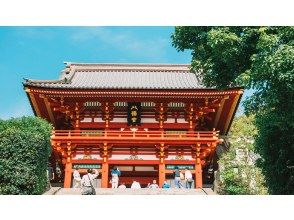
Tsurugaoka Hachimangu Shrine Tsurugaoka Hachimangu Shrine, formerly known as Kamakura Hachimangu Shrine, was the central religious center and patron saint of the samurai during the Kamakura Shogunate period (1192). It is also closely associated with the first Shogun of Kamakura and is quite famous in the Kanto region.
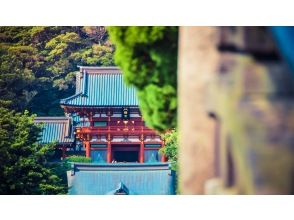
Tsurugaoka Hachimangu Shrine Tsurugaoka Hachimangu Shrine, formerly known as Kamakura Hachimangu Shrine, was the central religious center and patron saint of the samurai during the Kamakura Shogunate period (1192). It is also closely associated with the first Shogun of Kamakura and is quite famous in the Kanto region.
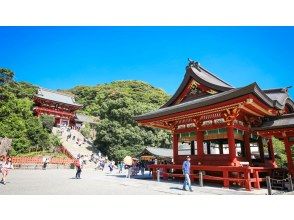
Tsurugaoka Hachimangu Shrine Tsurugaoka Hachimangu Shrine, formerly known as Kamakura Hachimangu Shrine, was the central religious center and patron saint of the samurai during the Kamakura Shogunate period (1192). It is also closely associated with the first Shogun of Kamakura and is quite famous in the Kanto region.
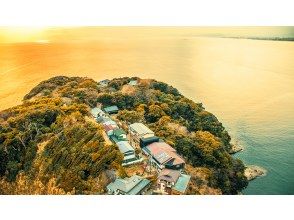

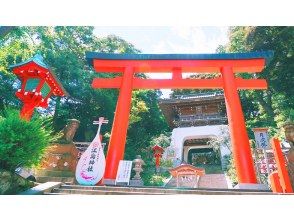
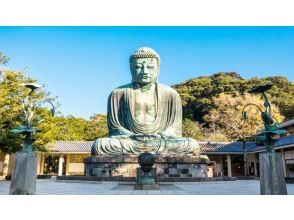
The Great Buddha of Kamakura The Great Buddha of Kamakura is a bronze statue of the seated Amida Nyorai Buddha at Kotoku-in Temple of the Jodo sect in the ancient capital of Kamakura, commonly known as the Great Buddha of Kamakura. The Great Buddha of Kamakura is 11.3 meters tall, 13.35 meters tall including the pedestal, and weighs approximately 121 tons. The statue was made in 1252 and has a flat face, low bun, and leans forward. The posture imitates the Buddhist statues of the Song Dynasty that were popular during the Kamakura period, and it is a representative Buddhist statue of the Kamakura period and is designated as a national treasure.
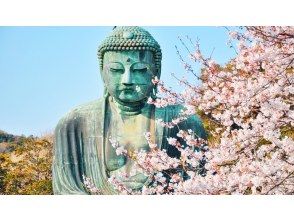
The Great Buddha of Kamakura The Great Buddha of Kamakura is a bronze statue of the seated Amida Nyorai Buddha at Kotoku-in Temple of the Jodo sect in the ancient capital of Kamakura, commonly known as the Great Buddha of Kamakura. The Great Buddha of Kamakura is 11.3 meters tall, 13.35 meters tall including the pedestal, and weighs approximately 121 tons. The statue was made in 1252 and has a flat face, low bun, and leans forward. The posture imitates the Buddhist statues of the Song Dynasty that were popular during the Kamakura period, and it is a representative Buddhist statue of the Kamakura period and is designated as a national treasure.
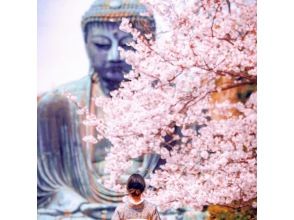
The Great Buddha of Kamakura The Great Buddha of Kamakura is a bronze statue of the seated Amida Nyorai Buddha at Kotoku-in Temple of the Jodo sect in the ancient capital of Kamakura, commonly known as the Great Buddha of Kamakura. The Great Buddha of Kamakura is 11.3 meters tall, 13.35 meters tall including the pedestal, and weighs approximately 121 tons. The statue was made in 1252 and has a flat face, low bun, and leans forward. The posture imitates the Buddhist statues of the Song Dynasty that were popular during the Kamakura period, and it is a representative Buddhist statue of the Kamakura period and is designated as a national treasure.
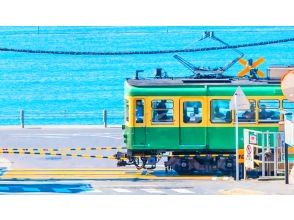
Kamakura High School Kamakura High School is a school located in Kamakura City, Kanagawa Prefecture, and is the prototype for Reinan High School in "Slam Dunk." The intersection close to the station is the location of the classic scene where Sakuragi Hanamichi greets Akagi Haruko. Standing at the intersection, the sound of the bells ringing will bring back memories of the hot youth of Slam Dunk.
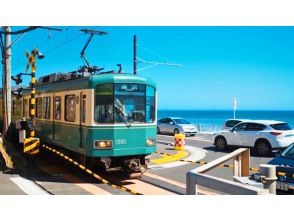
Kamakura High School Kamakura High School is a school located in Kamakura City, Kanagawa Prefecture, and is the prototype for Reinan High School in "Slam Dunk." The intersection close to the station is the location of the classic scene where Sakuragi Hanamichi greets Akagi Haruko. Standing at the intersection, the sound of the bells ringing will bring back memories of the hot youth of Slam Dunk.
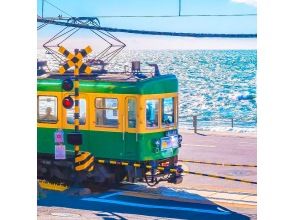
Kamakura High School Kamakura High School is a school located in Kamakura City, Kanagawa Prefecture, and is the prototype for Reinan High School in "Slam Dunk." The intersection close to the station is the location of the classic scene where Sakuragi Hanamichi greets Akagi Haruko. Standing at the intersection, the sound of the bells ringing will bring back memories of the hot youth of Slam Dunk.
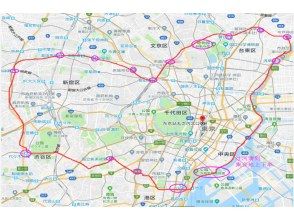
Hotel pickup and drop-off within Tokyo's seven wards Note: 1. Shinjuku 2. Chiyoda 3. Chuo 4. Taito 5. Minato 6. Shibuya 7. Bunkyo For the above areas, please check whether the specific hotel address is within the pickup area.
Time schedule

The Great Buddha of Kamakura The Great Buddha of Kamakura is a bronze statue of the seated Amida Nyorai Buddha at Kotoku-in Temple of the Jodo sect in the ancient capital of Kamakura, commonly known as the Great Buddha of Kamakura. The Great Buddha of Kamakura is 11.3 meters tall, 13.35 meters tall including the pedestal, and weighs approximately 121 tons. The statue was made in 1252 and has a flat face, low bun, and leans forward. The posture imitates the Buddhist statues of the Song Dynasty that were popular during the Kamakura period, and it is a representative Buddhist statue of the Kamakura period and is designated as a national treasure.
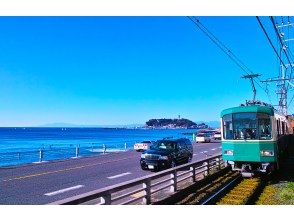
Enoden The Enoden is a streetcar that connects Fujisawa and Kamakura. It covers almost all of Kamakura's famous sites and also allows you to enjoy the beautiful scenery of the Shonan coast. The Enoden is a representative form of transportation that is indispensable when talking about Kamakura. Scenes of trains passing by at breakneck speeds often appear in major Japanese movies and anime. Therefore, in addition to watching it from afar, you can also experience the fun of riding the Enoden yourself.
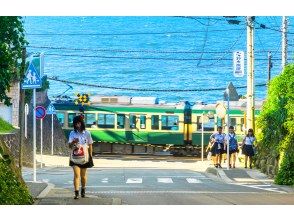
Enoden The Enoden is a streetcar that connects Fujisawa and Kamakura. It covers almost all of Kamakura's famous sites and also allows you to enjoy the beautiful scenery of the Shonan coast. The Enoden is a representative form of transportation that is indispensable when talking about Kamakura. Scenes of trains passing by at breakneck speeds often appear in major Japanese movies and anime. Therefore, in addition to watching it from afar, you can also experience the fun of riding the Enoden yourself.
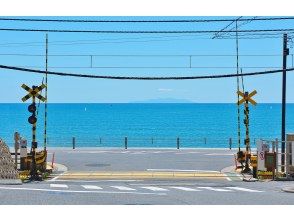
Kamakura High School Kamakura High School is located in Kamakura, Kanagawa Prefecture, Japan, and is the prototype of Reinan High School in "Slam Dunk". The intersection near the station is the location of the classic scene where Sakuragi Hanamichi greets Akagi Haruko. Standing at the intersection, the sound of the bells ringing also brings to mind the hot youthful memories of Slam Dunk. Now, many years later, when we come here, we can't help but take photos as if to commemorate our youthful days. . It feels like what we are witnessing is not a memory. The sea, that campus, and that streetscape in Slam Dunk are very important to people born in the 1980s. Because they can go to the places of their youthful memories and check them out, and they can relive the breath of youth as if they were young. For a while, they can calm down. There is one more reason to say bye-bye.
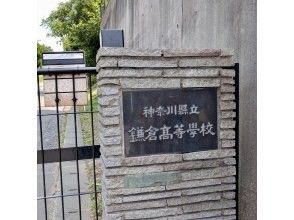
Kamakura High School Kamakura High School is located in Kamakura, Kanagawa Prefecture, Japan, and is the prototype of Reinan High School in "Slam Dunk". The intersection near the station is the location of the classic scene where Sakuragi Hanamichi greets Akagi Haruko. Standing at the intersection, the sound of the bells ringing also brings to mind the hot youthful memories of Slam Dunk. Now, many years later, when we come here, we can't help but take photos as if to commemorate our youthful days. . It feels like what we are witnessing is not a memory. The sea, that campus, and that streetscape in Slam Dunk are very important to people born in the 1980s. Because they can go to the places of their youthful memories and check them out, and they can relive the breath of youth as if they were young. For a while, they can calm down. There is one more reason to say bye-bye.
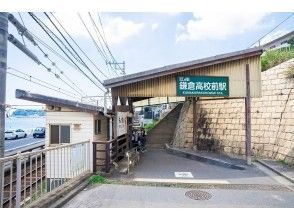
Kamakura High School Kamakura High School is located in Kamakura, Kanagawa Prefecture, Japan, and is the prototype of Reinan High School in "Slam Dunk". The intersection near the station is the location of the classic scene where Sakuragi Hanamichi greets Akagi Haruko. Standing at the intersection, the sound of the bells ringing also brings to mind the hot youthful memories of Slam Dunk. Now, many years later, when we come here, we can't help but take photos as if to commemorate our youthful days. . It feels like what we are witnessing is not a memory. The sea, that campus, and that streetscape in Slam Dunk are very important to people born in the 1980s. Because they can go to the places of their youthful memories and check them out, and they can relive the breath of youth as if they were young. For a while, they can calm down. There is one more reason to say bye-bye.
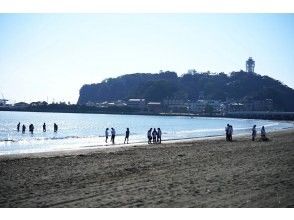
Enoshima The origin of Enoshima is said to be in April of the 13th year of Emperor Kinmei's reign (552), when sand welled up from the ocean floor, and 21 days later, the sand island was formed. The Enryakuji Temple on Mount Hiei has a moving legend about the formation of the island, which says that long ago, within 40 miles of Tsumura (present-day Kamakura City), there was a large lake. A five-headed evil dragon lived in the lake, which caused landslides and landslides, the spread of disease, floods and typhoons.
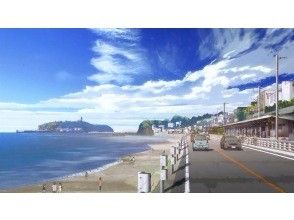
Enoshima The origin of Enoshima is said to be in April of the 13th year of Emperor Kinmei's reign (552), when sand welled up from the ocean floor, and 21 days later, the sand island was formed. The Enryakuji Temple on Mount Hiei has a moving legend about the formation of the island, which says that long ago, within 40 miles of Tsumura (present-day Kamakura City), there was a large lake. A five-headed evil dragon lived in the lake, which caused landslides and landslides, the spread of disease, floods and typhoons.
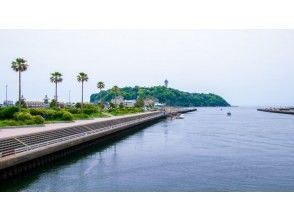
Enoshima The origin of Enoshima is said to be in April of the 13th year of Emperor Kinmei's reign (552), when sand welled up from the ocean floor, and 21 days later, the sand island was formed. The Enryakuji Temple on Mount Hiei has a moving legend about the formation of the island, which says that long ago, within 40 miles of Tsumura (present-day Kamakura City), there was a large lake. A five-headed evil dragon lived in the lake, which caused landslides and landslides, the spread of disease, floods and typhoons.
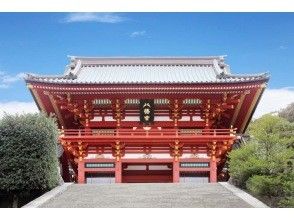
Tsurugaoka Hachimangu Shrine Tsurugaoka Hachimangu Shrine, formerly known as Kamakura Hachimangu Shrine, was the central religious center and patron saint of the samurai during the Kamakura Shogunate period (1192). It is also closely associated with the first Shogun of Kamakura and is quite famous in the Kanto region.
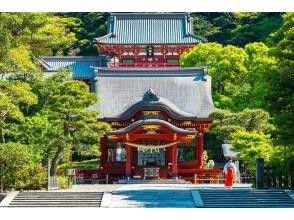
Tsurugaoka Hachimangu Shrine Tsurugaoka Hachimangu Shrine, formerly known as Kamakura Hachimangu Shrine, was the central religious center and patron saint of the samurai during the Kamakura Shogunate period (1192). It is also closely associated with the first Shogun of Kamakura and is quite famous in the Kanto region.
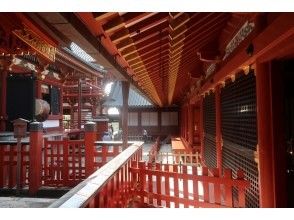
Tsurugaoka Hachimangu Shrine Tsurugaoka Hachimangu Shrine, formerly known as Kamakura Hachimangu Shrine, was the central religious center and patron saint of the samurai during the Kamakura Shogunate period (1192). It is also closely associated with the first Shogun of Kamakura and is quite famous in the Kanto region.

Komachi Street Komachi-dori: There are many famous gourmet restaurants featured on major websites and guidebooks. Don't miss it if you pass by.
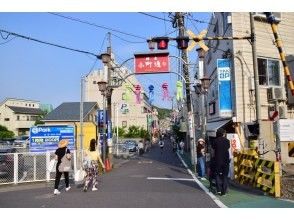
Komachi Street Komachi-dori: There are many famous gourmet restaurants featured on major websites and guidebooks. Don't miss it if you pass by.
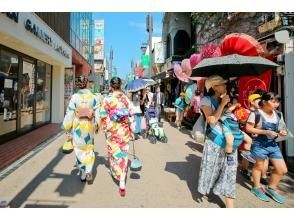
Komachi Street Komachi-dori: There are many famous gourmet restaurants featured on major websites and guidebooks. Don't miss it if you pass by.
Access - Map
1. Hotels and private lodgings in Shinjuku Ward, Chiyoda Ward, Chuo Ward, and Taito Ward can be picked up and dropped off directly. Other locations (5. Minato Ward, 6. Shibuya Ward, 7. Toshima Ward, 8. Nakano Ward, 9. Sumida Ward, 10. Koto Ward, 11. Bunkyo Ward, and 12. Edogawa Ward) require a second confirmation. *The bus departs on time. Please arrive with plenty of time (about 10 minutes before). Please adhere to the meeting and departure times and depart on time. The order and time of pick-up and drop-off will be arranged by the guide based on the situation, such as distance. Please understand and cooperate with each other and follow the guide's instructions.
It is not advisable to drive yourself
We recommend using public transport to get to the meeting point.
All reviews 0Results
Q&A about this plan Ask question about this plan
Activity Provider of this plan
Selling points regarding safety
Application conditionsIf you are in poor health, use a wheelchair or other device, have a mental or physical disability, have an allergy to animals, are pregnant, or may be pregnant, or have a guide dog for the physically disabled (guide dog, hearing dog, or assistance dog), or require other special consideration, please inform us of your need for special consideration when applying. We will comply with your request to the extent possible and reasonable. In this case, you will be responsible for the costs of any special measures we take for you based on your request.
| Authorization issued by | Shizuoka Prefectural Governor Registration Travel Industry No. 2-633 |
|---|---|
| Insurance information | ANTA Liability insurance 5 million yen |
| License and Qualifications | The guide has a tour guide license. |
| Member organizations and associations | Travel Agency Registered by Shizuoka Prefecture Governor No. 2-633 JATA Japan Association of Travel Agents |
| Number of staff | 25 people |
| Number of instructors | 1 people |
![[13-person team, pick-up from city hotels] Kamakura Great Buddha, Tsurugaoka Hachimangu Shrine, Enoshima Day Tour | Departing from Tokyoの紹介画像](https://img.activityjapan.com/10/55530/10000005553001_ScXBXyxi_4.jpg?version=1722392102)
![[13-person team, pick-up from city hotels] Kamakura Great Buddha, Tsurugaoka Hachimangu Shrine, Enoshima Day Tour | Departing from Tokyoの紹介画像](https://img.activityjapan.com/11/55530/11000005553002_ScXBXyxi_4.jpg?version=1722392102)
![[13-person team, pick-up from city hotels] Kamakura Great Buddha, Tsurugaoka Hachimangu Shrine, Enoshima Day Tour | Departing from Tokyoの紹介画像](https://img.activityjapan.com/11/55530/11000005553003_ScXBXyxi_4.jpg?version=1722392102)
![[13-person team, pick-up from city hotels] Kamakura Great Buddha, Tsurugaoka Hachimangu Shrine, Enoshima Day Tour | Departing from Tokyoの紹介画像](https://img.activityjapan.com/11/55530/11000005553004_ScXBXyxi_4.jpg?version=1722392102)
![[13-person team, pick-up from city hotels] Kamakura Great Buddha, Tsurugaoka Hachimangu Shrine, Enoshima Day Tour | Departing from Tokyoの紹介画像](https://img.activityjapan.com/11/55530/11000005553005_ScXBXyxi_4.jpg?version=1722392102)
![[13-person team, pick-up from city hotels] Kamakura Great Buddha, Tsurugaoka Hachimangu Shrine, Enoshima Day Tour | Departing from Tokyoの紹介画像](https://img.activityjapan.com/11/55530/11000005553006_ScXBXyxi_4.jpg?version=1722392102)
![[13-person team, pick-up from city hotels] Kamakura Great Buddha, Tsurugaoka Hachimangu Shrine, Enoshima Day Tour | Departing from Tokyoの紹介画像](https://img.activityjapan.com/11/55530/11000005553007_ScXBXyxi_4.jpg?version=1722392102)
![[13-person team, pick-up from city hotels] Kamakura Great Buddha, Tsurugaoka Hachimangu Shrine, Enoshima Day Tour | Departing from Tokyoの紹介画像](https://img.activityjapan.com/11/55530/11000005553008_ScXBXyxi_4.jpg?version=1722392102)
![[13-person team, pick-up from city hotels] Kamakura Great Buddha, Tsurugaoka Hachimangu Shrine, Enoshima Day Tour | Departing from Tokyoの紹介画像](https://img.activityjapan.com/11/55530/11000005553009_ScXBXyxi_4.jpg?version=1722392102)
![[13-person team, pick-up from city hotels] Kamakura Great Buddha, Tsurugaoka Hachimangu Shrine, Enoshima Day Tour | Departing from Tokyoの紹介画像](https://img.activityjapan.com/11/55530/11000005553010_ScXBXyxi_4.jpg?version=1722392102)
![[13-person team, pick-up from city hotels] Kamakura Great Buddha, Tsurugaoka Hachimangu Shrine, Enoshima Day Tour | Departing from Tokyoの紹介画像](https://img.activityjapan.com/11/55530/11000005553011_ScXBXyxi_4.jpg?version=1722392102)
![[13-person team, pick-up from city hotels] Kamakura Great Buddha, Tsurugaoka Hachimangu Shrine, Enoshima Day Tour | Departing from Tokyoの紹介画像](https://img.activityjapan.com/11/55530/11000005553012_ScXBXyxi_4.jpg?version=1722392102)
![[13-person team, pick-up from city hotels] Kamakura Great Buddha, Tsurugaoka Hachimangu Shrine, Enoshima Day Tour | Departing from Tokyoの紹介画像](https://img.activityjapan.com/11/55530/11000005553013_ScXBXyxi_4.jpg?version=1722392102)
![[13-person team, pick-up from city hotels] Kamakura Great Buddha, Tsurugaoka Hachimangu Shrine, Enoshima Day Tour | Departing from Tokyoの紹介画像](https://img.activityjapan.com/11/55530/11000005553014_ScXBXyxi_4.jpg?version=1722392102)
![[13-person team, pick-up from city hotels] Kamakura Great Buddha, Tsurugaoka Hachimangu Shrine, Enoshima Day Tour | Departing from Tokyoの紹介画像](https://img.activityjapan.com/11/55530/11000005553015_ScXBXyxi_4.jpg?version=1722392102)
![[13-person team, pick-up from city hotels] Kamakura Great Buddha, Tsurugaoka Hachimangu Shrine, Enoshima Day Tour | Departing from Tokyoの紹介画像](https://img.activityjapan.com/11/55530/11000005553016_ScXBXyxi_4.jpg?version=1722392102)
![[13-person team, pick-up from city hotels] Kamakura Great Buddha, Tsurugaoka Hachimangu Shrine, Enoshima Day Tour | Departing from Tokyoの紹介画像](https://img.activityjapan.com/11/55530/11000005553017_ScXBXyxi_4.jpg?version=1722392102)
![[13-person team, pick-up from city hotels] Kamakura Great Buddha, Tsurugaoka Hachimangu Shrine, Enoshima Day Tour | Departing from Tokyoの紹介画像](https://img.activityjapan.com/11/55530/11000005553018_P3BiVCAd_4.png?version=1722392102)
![[Kobe day trip with transfer] A luxurious plan that includes the three most popular attractions: Arima's famous hot springs, shopping, and the million-dollar night view of Mt. Rokko](https://img.activityjapan.com/10/55492/10000005549201_P3BiVCAd_2.jpg?version=1744699982)
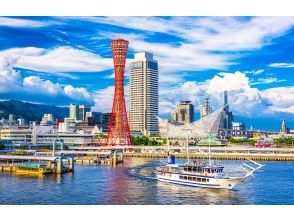
![[Day trip] Kobe night view, Kobe Port Skyscraper Ferris Wheel, Kitano Foreigners' House District, Arima Onsen, Mt. Rokko night view](https://img.activityjapan.com/10/55503/10000005550301_P3BiVCAd_2.jpg?version=1744705983)
![[Day trip] Kyoto, Amanohashidate, Ine Funaya, Miyama Thatched House plan (with hotel pick-up in Osaka city)](https://img.activityjapan.com/10/56281/10000005628101_KGckTMmm_2.jpg?version=1730786645)
![[Kyushu, Oita] Yufuin | Lake Kinrin | Kyushu Natural Zoo | Sea Hell | Hearth Hell Day Tour](https://img.activityjapan.com/10/56283/10000005628301_1dhWswak_2.jpg?version=1744773546)
![[Kyushu-Kumamoto] Kamishiromi Kumanoimasu Shrine | Takamori Senbonzakura | Amano Iwato Shrine | Tenan Riverside | Takachiho Gorge Day Trip (Departing from Fukuoka)](https://img.activityjapan.com/10/56297/10000005629701_1dhWswak_2.jpg?version=1744774803)
![[Kumamoto Castle] Aso Volcano Senri | Aso Boy Sightseeing Train Experience Day Tour | Departing from Fukuoka | Departing from Kumamoto](https://img.activityjapan.com/10/56300/10000005630001_P3BiVCAd_2.jpg?version=1730966223)
![[Day trip] Awaji Island and Naruto sightseeing plan (with city hotel pick-up and drop-off)](https://img.activityjapan.com/10/55719/10000005571901_1dhWswak_2.jpg?version=1744856222)
![[Day trip] Kyoto city hotel pick-up and drop-off included. Japanese-style Kyoto sightseeing tour, Kinkaku-ji Temple - Kiyomizu-dera Temple - Fushimi Inari Taisha Shrine. Passing through the 1,000 torii gates.](https://img.activityjapan.com/10/55487/10000005548701_P3BiVCAd_2.jpg?version=1733822342)
![[Kyoto day trip with transfer included] A plan to visit two of Kyoto's great attractions: Arashiyama's spectacular trolley ride and Kokedera Sanzenin Temple](https://img.activityjapan.com/10/55488/10000005548801_P3BiVCAd_2.jpg?version=1744016286)
![[Shonan/Kamakura] Beginners, women, and families are welcome! (8 people or more on holidays)](https://img.activityjapan.com/10/9438/10000000943801_XBu5WckL_2.jpg?version=1675233722)
![[Shonan/Kamakura] Gomoku fishing on a tailoring boat "Weekday/Private plan" Beginners, women, and families are welcome! (6 people or more on weekdays)](https://img.activityjapan.com/10/9437/10000000943701_XBu5WckL_2.jpg?version=1657257846)
![[Shonan / Kamakura / half day] 2 minutes near the station ♪ Empty-handed OK ♪ You can catch various kinds of fish! Gomoku fishing experience on a shared boat-Beginners, women and children welcome! Horse mackerel, Thai, Inada, etc.](https://img.activityjapan.com/10/9436/10000000943601_2xhxo0Hc_2.jpg?version=1690801082)
![[Kanagawa/Kamakura] A memorable trip! Experience making your own original chopsticks](https://img.activityjapan.com/10/61923/10000006192301_EhJaTzhP_2.png?version=1765818916)
![[Kanagawa/Kamakura] An original bracelet that will last a lifetime! Keep your memories of Kamakura intact! Permanent jewelry experience (recommended for couples and friends)](https://img.activityjapan.com/10/61792/10000006179201_xX8yEHfn_2.JPG?version=1764654966)
![[Kanagawa, Kamakura] Handicrafts in Japanese Life (Workshop & Sales Event) Includes a seasonal vegetable one-plate lunch (with drink) 3 minutes from Kamakura Station](https://img.activityjapan.com/10/61375/10000006137501_D72lNZF7_2.jpg?version=1761528486)